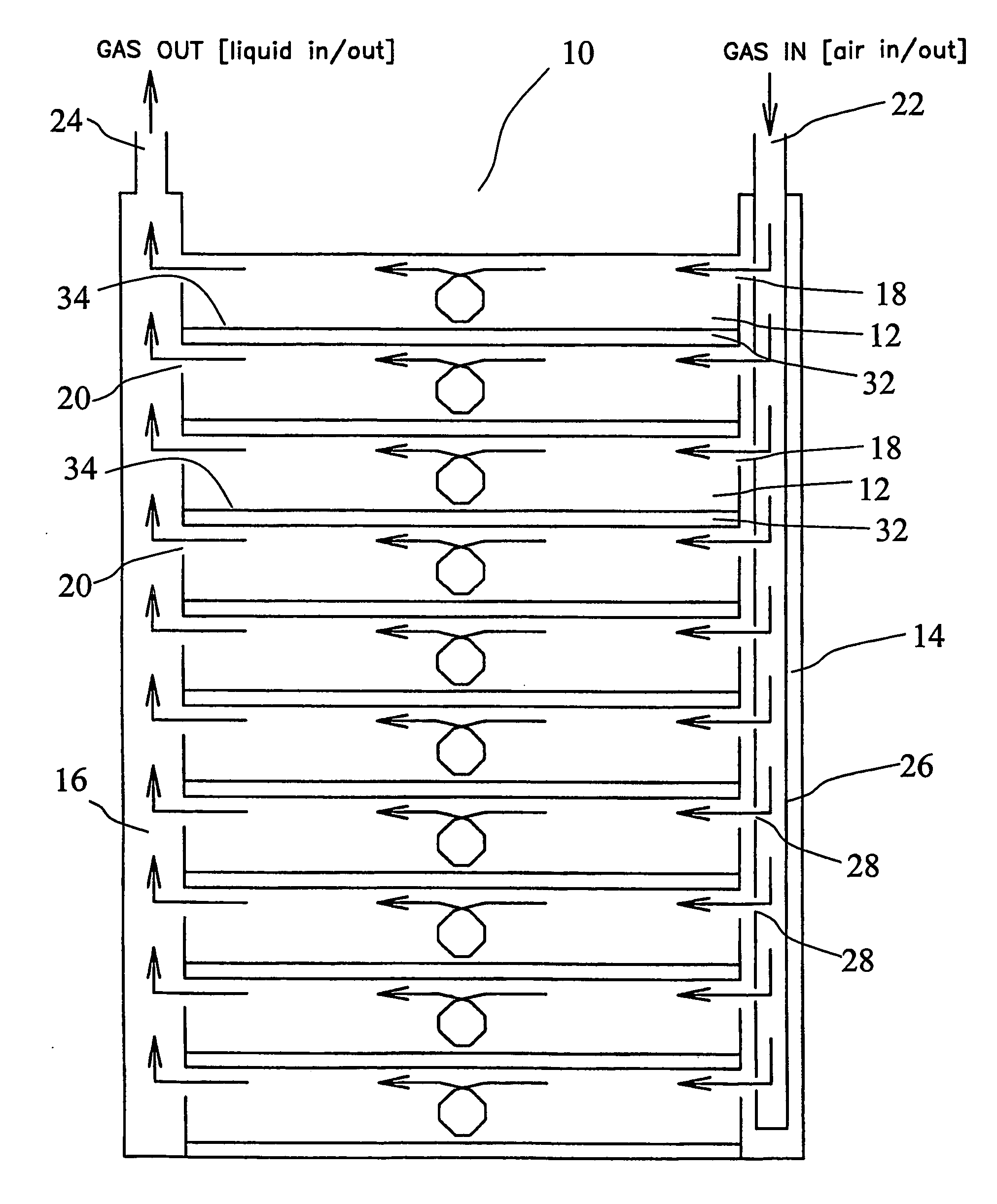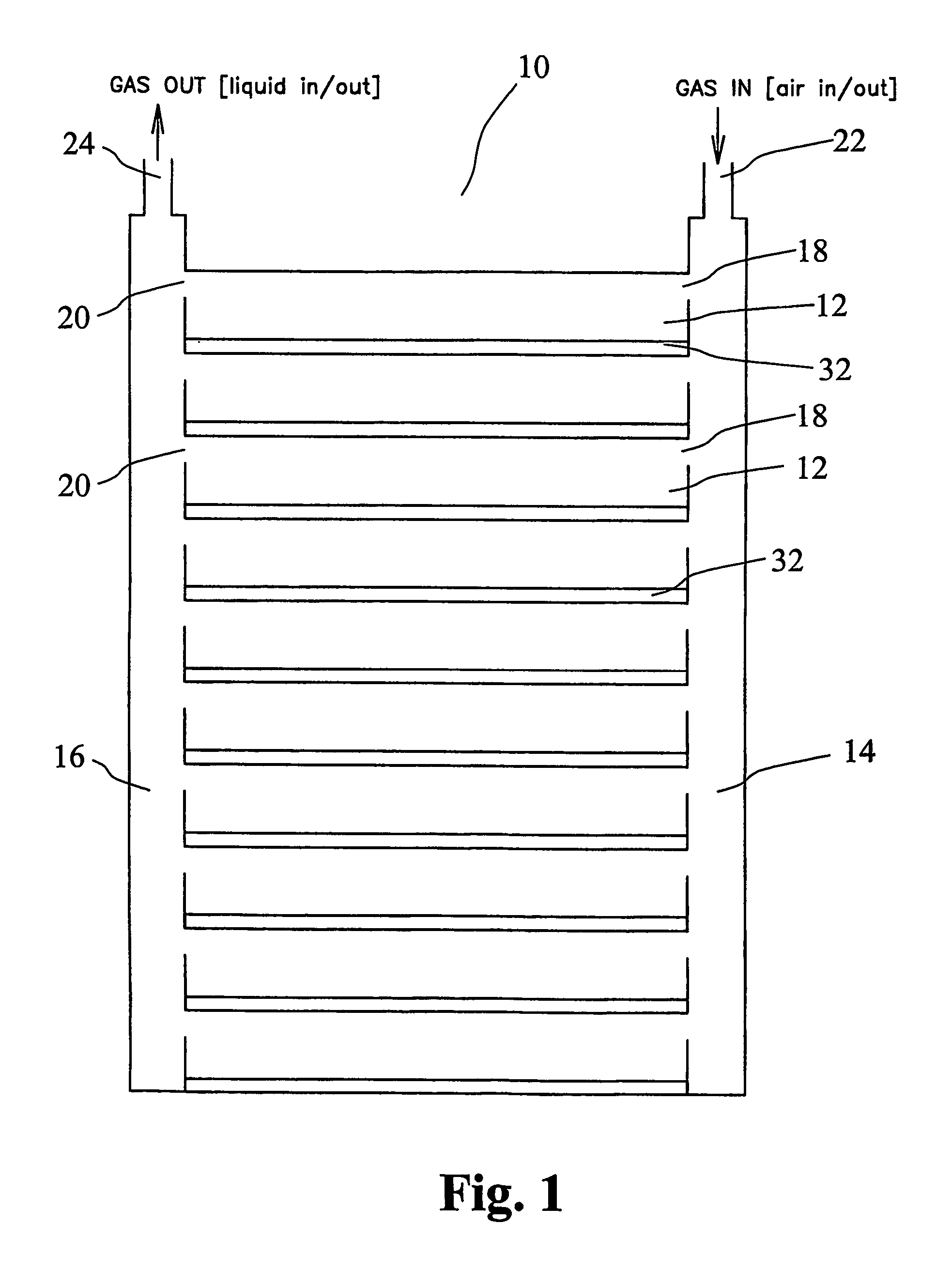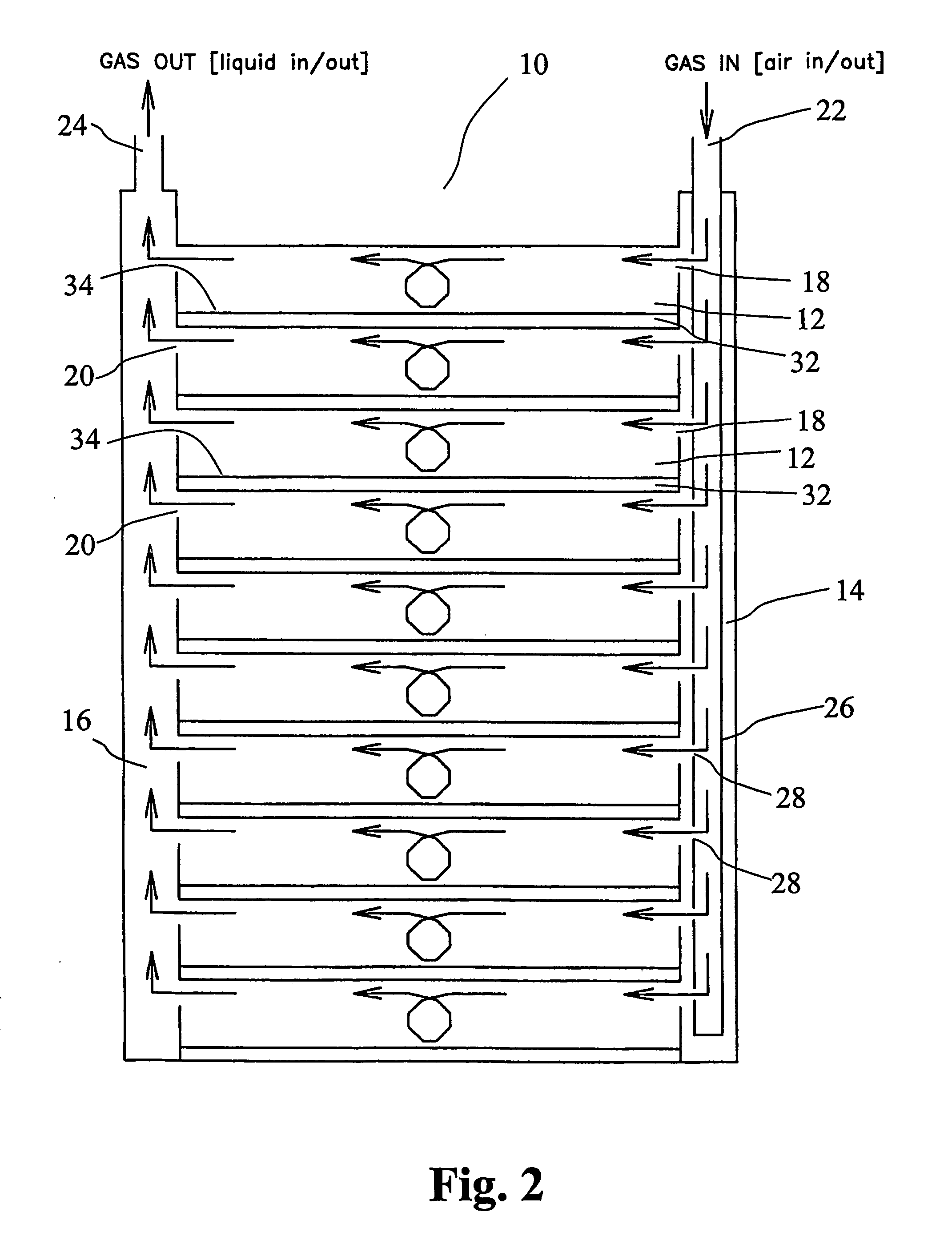Tray stack adapted for active gassing
a technology of active gassing and stacking trays, which is applied in the direction of biochemistry apparatus, biochemistry apparatus and processes, enzymology/microbiology apparatus, etc., can solve the problems of limiting growth and product synthesis, reducing the gas flow rate and reducing the oxygen supply of individual culture trays. , to achieve the effect of increasing the gas flow rate and enhancing the supply of oxygen
- Summary
- Abstract
- Description
- Claims
- Application Information
AI Technical Summary
Benefits of technology
Problems solved by technology
Method used
Image
Examples
example 1
Materials and Methods
A CF40 Forty Tray (Nunc, Roskilde) system with an O2 sensor (Fiber-Optic Oxygen Minisensor from PreSens Precision Sensing GmbH, Germany) mounted into every third tray at the tray side opposing the connecting channels was used. The CF40 has a volume of approximately 36 L.
The initially atmospheric air-filled CF40 were gassed with N2 under the conditions mentioned below and the relative oxygen percentage in the gas in the trays were determined after gassing with N2 for 15 min, 30 min, 45 min and / or 60 min using a FIBOX Oxygen Meter from PreSens Precision Sensing GmbH, Germany.
Experiment 1A illustrates the time for distribution of a gas in the CF40 system. In the experiment is used a gas exchanger with 40 processed circular apertures having a diameter of 0.4 mm and wherein the centre axis of each aperture is extending into the respective tray opening in an angel of 45° to the tray sides. The flow rate of the supplied N2 is 1.3 L / min and the oxygen percentages is det...
experiment 1b
illustrates the gas distribution at different flow rates of gas. In the experiment is used a gas exchanger positioned as described in Example 1A, and gas flow rates of 0.3 L / min, 1.3 L / min and 2.7 L / min. The oxygen percentage is determined after gassing for 30 min and 60 min.
Experiment 1C illustrates the distribution of gas in the trays of the CF40 system when using different gas exchanger designs: 1) a gas exchanger in the shape of a tube open in both ends, wherein the one end is placed at the bottom of the channel (“Bottom tube”), 2) a gas exchanger in the shape of a tube with 40 processed circular apertures, and wherein each aperture (0.4 mm internal diameter) is placed so that the centre axis of the aperture is extending into the respective tray opening in an angel of 45° to the tray sides (“Flute direct”), and 3) a gas exchanger in the form of a tube with 40 processed circular apertures (0.4 mm internal diameter), wherein the apertures are positioned opposite the respective tra...
example 2
Materials and Methods
A CF40 Forty Tray (Nunc, Roskilde) system with an O2 sensor (see Example 1) mounted into every third tray at the tray side opposing the connecting channels was used. The O2 electrode is positioned in the headspace above the liquid, when 8 L liquid is applied to the device. The CF40 has a volume of approximately 36 L.
The initially atmospheric air-filled or 8 L liquid+atmospheric air-filled CF40 were gassed with N2 under the conditions mentioned below and the relative oxygen percentage in the gas in the trays were determined after gassing with N2 for 5 min, 20 min, 30 min and / or 60 min using the same apparatus as in Example 1.
Experiment 2A illustrates the time for distribution of a gas in the CF40 device. In the experiment is used a gas exchanger with 40 processed circular apertures (0.4 mm internal diameter), wherein the centre axis of each aperture extends along a longitudinal extension of the respective tray as illustrated in FIG. 7 (except that only one apertu...
PUM
| Property | Measurement | Unit |
|---|---|---|
| internal diameter | aaaaa | aaaaa |
| flow rate | aaaaa | aaaaa |
| internal diameter | aaaaa | aaaaa |
Abstract
Description
Claims
Application Information
 Login to View More
Login to View More - R&D
- Intellectual Property
- Life Sciences
- Materials
- Tech Scout
- Unparalleled Data Quality
- Higher Quality Content
- 60% Fewer Hallucinations
Browse by: Latest US Patents, China's latest patents, Technical Efficacy Thesaurus, Application Domain, Technology Topic, Popular Technical Reports.
© 2025 PatSnap. All rights reserved.Legal|Privacy policy|Modern Slavery Act Transparency Statement|Sitemap|About US| Contact US: help@patsnap.com



